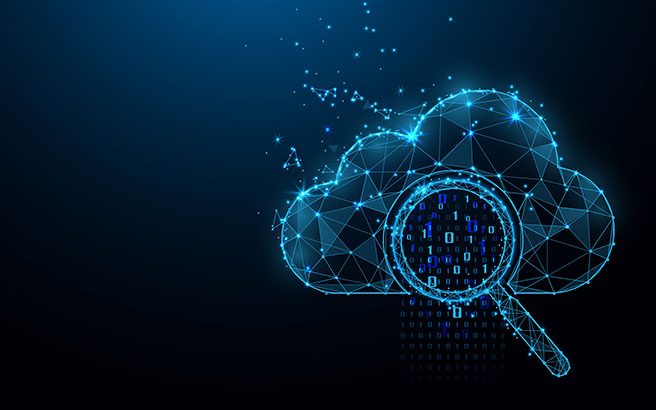Our digital hub followers would already be aware of my devoted passion for Big Data analytics and my conviction that only agile businesses will be able to survive the transition from an industrial to digital age (the famous “digital disruption”) which we are currently experiencing at an accelerated rate since COVID-19.
There is no one size-fits-all, easy definition of what an “agile” business is. As a matter of fact, defining it seems to be as complicated as implementing it. The literature on the subject is still very theoretical at this stage and somehow there is no mould every business can fit.
To me, an agile business is one that can actively respond, adapt and change without losing its vision towards the end goal. So, what does this mean practically?
Forecast and react quickly. Think ahead of competitors and the market. There is no secret here, those who can foresee and navigate risks have always been more likely to survive than those who can’t. And really… the ability to see ahead separates winners from losers in the business world.
In the financial world itself, gaining visibility and control over cash flows and working capital is the most fundamental activity businesses need to undertake and forecasting assists business to stay “agile” in this rapidly changing environment in the following two major ways:
- It assists with a framework to continuously assess its current position and available options; and
- It provides a powerful tool to assess options and compare alternative courses of actions needed to consolidate growth and financial stability.
The best forecasting format is what we call in the industry a “three-way forecast” as it combines three key financial reports into one neat summarised package – it links Profit and Loss (P&L), Balance Sheet and Cashflow reports together giving these reports greater credibility, and allowing businesses to predict future cash positions and their relative “financial health” at any point in time.
But these models are only effective if properly “data-fuelled” and “instantly available”. If not, they’re a waste of time… It’s all about finding better ways to model larger volumes of data and assess multiple scenarios quicker.
We all are aware of George Patton’s quote: “A good plan implemented today is better than a perfect plan tomorrow”. Today, those who tackle digital disruption at full throttle are convinced that they can implement a perfect plan today. And that is because they dare to invest in enabling technologies and making these technologies an integral part of their overall operational and competitive strategies.
Traditionally, forecasting has been a mostly manual process that involves compiling and manipulating data, often with spreadsheets. With more and more data available, old-fashioned forecasting has become an awkward, time-consuming process that makes discerning what’s important next to impossible. As a result, humans often resort to our own intuition and judgement, which leaves the door opened to bias and errors.
These manual forecasting processes also take time and this is where algorithmic forecasting can help. Organisations are shifting to forecasting that involves people working symbiotically with predictive algorithms, allowing them to deal with larger data sets and therefore generating smarter insights and stronger business outcomes. And yes, it’s all made possible by new technologies— advanced analytics platforms, in-memory computing, and artificial intelligence tools such as machine learning.
So, what is an algorithm?
An algorithm is a set of rules to be followed in calculations or other problem-solving operations, especially by a computer but we humans use algorithms in our every day lives. One of the most obvious examples of an algorithm is a recipe. It’s a detailed list of instructions used to perform a task. For example, if you were to follow the algorithm to create cookies from a pre-made mix, you would follow the three to five step process written on the back of the box.
The power of algorithms is evident when you combine them with computing technology. Let me explain.
Computers can’t do anything without being told what to do. However, they can perform calculations or certain tasks much quicker than we can. Algorithms become binding agents combining the human ‘smarts’ and ‘problem solving’ abilities to a computer’s fast and accurate processing ability. Combining both enables quicker and more reliable forecasts… it’s almost like gaining the ability to instantaneously project ourselves in the future!
Algorithmic forecasting uses statistical models to describe what’s likely to happen in the future. It’s a process that relies heavily on historical company and market data, statistical algorithms designed by experienced data scientists, and modern computing capabilities that make collecting, storing, and analysing data fast and more affordable.
With algorithmic forecasting, decision makers do more insight-development work and less manual labour. Instead of spending their time grinding through spreadsheets, they get to bring their expert judgment to the process. And in fact, this part is important for algorithmic forecasting to be efficient: There must be a symbiotic relationship between humans and the technology for the process to work. Machines keep humans honest, and humans evaluate and translate the machine’s output into decisions and actions. A little like the movie Minority Report.
Making choices becomes a more interactive process with advanced forecasting techniques, resulting in smarter, more informed decisions than can be done on-the-go. In-memory computing, predictive analytic software, and visualisation tools enable management to easily and quickly ask “what if?” and produce a range of scenario analyses to help them understand potential impacts on the business.
Is this something small business can afford or even implement?
Data is free which is a good start, but it is very hard for small businesses to build their own in-house algorithms and data management capabilities. However, there are a multitude of affordable algorithmic forecasting software providers for small businesses out there! When it comes to cashflow forecasting for small businesses, you can now buy packages which integrate with your cloud-based accounting data file or ERP system and perform algorithmic forecasting for less than $1,000 a year.
These packages often include powerful tools such as input and reporting automation as well as scenario and sensitivity analysis modules. Small business owners can take advantage of the real-time and automated reports that these packages have to offer.
And small businesses should not limit the use of algorithmic forecasting tools to their finance function. They can also affordably rely on benchmarking and customer data analysis predictive tools or “Just-in-time” inventory and staffing management tools to positively impact their operations and cashflow..
At the end of the day, staying agile is not so much about the investment, it really is about an overall shift in how well businesses collect and use the data available to them.
What alarms me is the common belief that all of this is the future. It is not. We use it every day. Google, Netflix, Facebook! And today, the computing technology is still binary-based which is very basic, really… 1,0,0,1,0. Yes or no. No in between.
The future of algorithmic forecasting is just around the corner, with Quantum computing which will expand predictions to a much wider array of predictive outcomes than just “1” or 0” . And all of that while still exponentially increasing the timing and accuracy of the calculations.
I am convinced that all businesses, big or small, that have not yet embraced Big Data and algorithmic forecasting, will not survive the digital age. I am also a great believer that this digital age we have entered will be short and sweet, almost like a transition to an even bigger data-driven era: The Quantum age.





























